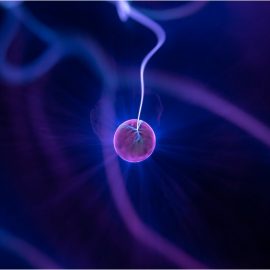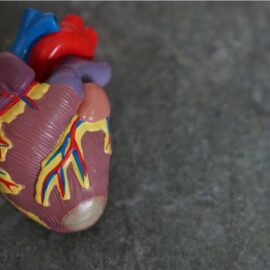
What are high-vibration emotions? What are the benefits of these emotions?
David R. Hawkins states that to reach an ultimate state of peace, you must release unhelpful feelings and make room for beneficial ones. These positive emotions attract success and fulfillment with their high frequencies.
Let’s examine three of the most powerful positive emotions: courage, love, and peace.
1. Courage
According to Hawkins, courage represents the transition from a mindset of limitation to a mindset of capability. You no longer think of all you can’t do and instead turn your attention to what you can do.
(Shortform note: Courage is one of the four cardinal virtues of the philosophy of Stoicism, meaning the Stoics also believed it was essential for living a good life. In Courage Is Calling, modern-day Stoic philosopher Ryan Holiday describes courage in terms of action and capability, like Hawkins. He defines courage as doing the right thing even though you’re scared. Embodying this virtue means acting to help yourself or someone else in need regardless of potential negative consequences.)
When embodying the energy of this high-vibration emotion, you’re able to be joyful, centered, and self-assured. You have faith that you can get the things you want and need with abilities you already have, and you learn to respect yourself. When you invite courage in, you’re willing to take risks and make mistakes to grow.
(Shortform note: Every time you show courage and take on fear, you feel more powerful and your fears become less powerful as you learn how to manage them. One way to exercise courage is by doing something scary every day. It can be something small, such as trying a new type of food or asking someone out on a date. Over time, the evidence of your capabilities that you gain from successfully facing your fears and taking small risks builds up into higher self-esteem.)
2. Love
Hawkins asserts that love is more than just a high-frequency emotion—it’s a way of life. Whenever you offer love and kindness to other beings, you’re improving the world around you. Putting out love freely also means that it’ll come back to you freely.
Once you’re no longer holding on to your negative emotions, you realize that love is everywhere, just waiting to be discovered, and it can manifest in countless ways. For example, love can be found in a teacher letting a tired student sleep in class because the student’s struggling at home, or a friend taking the time to listen to your favorite song. When you exist in a state of love, your presence and actions encourage the people around you to be better, too—to be calmer, more considerate, more patient, and so on.
On an individual level, love makes it easier for you to forgive yourself for perceived faults. You’re able to accept yourself as you are. Additionally, it becomes easier to feel grateful to be alive and thankful for the things that bring you joy and happiness. Thus, your life becomes better, and you make other people’s lives better.
3. Peace
Hawkins names peace as the highest, most evolved emotional state. Peace is the ultimate goal of emotional release, wherein you’ve freed yourself from all negative energy. In many spiritual traditions, someone who’s achieved true peace has reached enlightenment.
(Shortform note: Hawkins’s definition of peace aligns with the Buddhist definition of enlightenment. When you’re enlightened, you’re no longer bound to samsara, or the continuous cycle of death and rebirth. Additionally, you’re free from all earthly attachments, which are the source of suffering. Just as peace is the ultimate emotional state, enlightenment is the ultimate goal of Buddhist practice.)
When you’re at peace, you feel inner stillness, unity, and contentment. No outside force can disturb this internal quiet, and you no longer experience earthly suffering because your sense of self is no longer tied to your physical body.
(Shortform note: In The Power of Now, Eckhart Tolle describes this state of peace and unity as being connected to your true Being. He states that your true Being is your deepest self, which you can connect to only when you’re wholly present in the current moment. It’s your life energy, which is unaffected by your physical body, mind, ego, and any external factors. Every living thing has a true Being, and all Beings are connected by a unifying life energy. Your true Being is indestructible, even in death—your body is merely the physical form it takes. Connecting with your true Being is the only way to attain true happiness.)
Finally, true peace also means you no longer experience desire. You don’t need to covet anything because the energy that you put out is so strong and positive that anything you need automatically arrives in your life.
(Shortform note: Tara Brach states in Radical Acceptance that you don’t need to completely eliminate desire to experience peace and reduce suffering. She argues that some desire is inevitable because you’ll always want certain things to live (such as food). Instead of trying to eliminate your desires, strive to not be ruled by them. When you encounter desire in any form—whether it’s a desire for food, companionship, a new gadget, or anything else—you should meet it without resistance and without letting it possess you. Instead, meet it with mindful acceptance. In doing so, you can experience desire but live freely despite it.)






